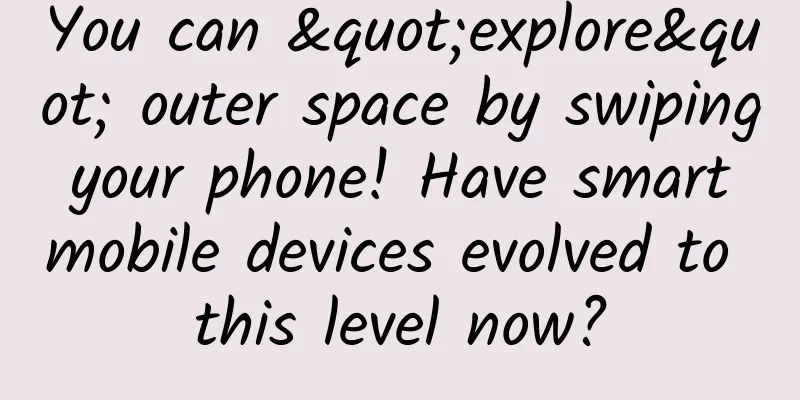You can "explore" outer space by swiping your phone! Have smart mobile devices evolved to this level now?

|
Using millions of Android smartphones around the world, scientists have created one of the most detailed maps of Earth's ionosphere to date Ordinary smartphones may become powerful tools for exploring outer space . Researchers have turned millions of Android smartphones around the world into an army of flexible scientific instruments, creating one of the most detailed maps of Earth's ionosphere to date, which could improve the accuracy of global GPS technology by several times. The study was led by Brian Williams of Google Research and co-authored by Professor Jade Morton of the Department of Aerospace Engineering Sciences at the University of Colorado Boulder. The results were published in the journal Nature on November 13. Using GPS sensors found in standard smartphones, the researchers collected data on how Earth's atmosphere distorts satellite signals, allowing them to observe atmospheric phenomena in unprecedented detail, such as clumps called plasma bubbles high in the Earth's atmosphere. Now that the data has been made publicly available, anyone can see how the atmosphere rotates and changes over a period of about eight months. The study focused on the ionosphere, a part of the atmosphere that extends about 50 to 1,500 kilometers above the Earth. The atmospheric molecules and atoms in it, under the influence of solar radiation, split into charged particles, which scientists call plasma. Usually, at 2 pm, when solar radiation is strongest, there are more charged particles in the ionosphere, but at night there are very few charged particles. However, fluctuations in the number of charged particles in the ionosphere can seriously affect GPS positioning. Fluctuations in the number of charged particles in the ionosphere can seriously affect GPS positioning When GPS positioning is used, the positioning satellite in space will first transmit radio waves to the earth, and the positioning devices such as mobile phones determine the location by measuring the time required for the signal to reach the ground. Since the fluctuation of the ionosphere affects the propagation speed of radio waves, the positioning device will have significant errors when calculating the distance to the satellite, which is also one of the biggest sources of geographic positioning errors. By using radar antennas on the ground, scientists can map the ionosphere to understand the impact of the ionosphere on the time it takes for positioning satellite signals to reach the earth. However, this method can only observe about 14% of the ionosphere at a time. Therefore, the positioning displayed by the GPS device may be off by a few feet to tens of feet (1 foot is about 0.3 meters). A map of the ionosphere generated from 10 minutes of mobile phone data shows the concentration of charged particles in different parts of the world. In a new study, researchers proposed an unusual idea : abandon expensive radar antennas and instead use sensors that exist in every country on Earth to map the ionosphere: Android phones. Relying on this global army of phones, about 21% of the ionosphere can be observed at a time, which is expected to double the accuracy of global GPS devices. The team's maps also capture the ionosphere in amazing detail. The team's phones were watching as a powerful solar storm hit Earth in May 2024. In the hours that followed, giant "plasma bubbles" containing low concentrations of charged particles formed over parts of South America. These bubbles then passed through the ionosphere like wax in a lava lamp. Morton believes that their research shows that the everyday technology that people are accustomed to still has untapped potential. "I have spent my life building instruments specifically for scientific research," Morton said, "but as society progresses, the sensors around us are more powerful than we imagined." References https://techxplore.com/news/2024-11-smartphones-instruments-space.html Compiled by: Wen Xing Reviewer: Liu Yong, Researcher at the National Space Science Center of the Chinese Academy of Sciences, Ambassador of China's Space Science Popularization |
<<: I brush my teeth every day, but why does it still hurt?
>>: #千万IP创科普# Beware! Up to 800℃! This "bedding" can be fatal if it catches fire
Recommend
The efficacy and function of Gouding
Medicinal herbs such as Gouting need to be dried ...
What are the effects and functions of citrus?
In real life, citrus fruits are evergreen trees, ...
Beware! The Shanxi express delivery epidemic has spread to 4 places! Please check this reminder →
The epidemic related to Yunda Express in Shanxi P...
Hey! You "sons of the earth" in armor and helmets, you have good news again
The Chinese pangolin (Manis pentadactyla) is dist...
What are the medicinal properties of Rhodiola?
Speaking of Rhodiola rosea, many friends may mist...
Asian Winter Games Science Popularization Issue 11丨Asia Winter Games award uniforms upgraded, self-developed technology enters the world arena
The Asian Winter Games not only provides a fierce...
eMarketer: Retailers see big data as a boon to e-commerce
Less than one in five retail managers are unaware...
Orange high temperature warning issued! How to prevent heat stroke scientifically?
At 18:00 on the 22nd, the Central Meteorological ...
Does Zhao Gao know a deer?
In recent years, there have been many reversals o...
The efficacy and function of Gorgon Root
Most Chinese medicinal materials have good effect...
What are the functions and effects of Panax notoginseng leaves?
When it comes to the traditional Chinese medicine...
Lithium is not only in batteries, but also in medicines...
Lithium is not only in batteries, but also in med...
Comparable to the "China Sky Eye", can this telescope see alien civilizations?
Not long ago Qitai radio telescope at Xinjiang As...
The shell can cure heart disease, the kernel can relieve constipation, and the root can produce body fluid. You have definitely never seen it before.
This melon likes to grow in the cracks of cliffs ...
Cockatoos know how to season and love to cook dark dishes | Natural Trumpet
1) Cockatoos are good at seasoning and love to co...









